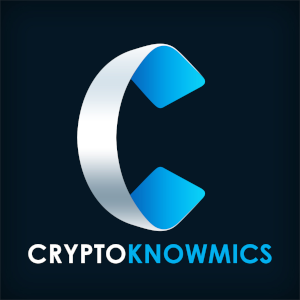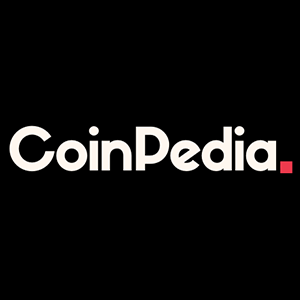Backed by Ripple as the anchor investor, the fund is the start of a broader partnership to develop new XRP-based financial products, including tokenized money market funds. Meanwhile, Ripple’s acquisition of prime brokerage firm Hidden Road has already led to a FINRA broker-dealer license, which perfectly positions the company to expand into traditional financial markets. With regulatory clarity improving and the SEC lawsuit behind it, Ripple appears well-poised to benefit from a broader altcoin resurgence that is predicted for Q2 of 2025. XRP Institutional Adoption Gains Momentum Hong Kong-based crypto investment firm HashKey Capital announced the launch of the HashKey XRP Tracker Fund, which is a first-of-its-kind product in Asia that is designed to track the performance of XRP. It was revealed on April 18, and the fund is a big step toward institutional adoption of the XRP token. It is also expected to pave the way for more regulated exposure to digital assets in the region. Ripple, the developer behind XRP, will act as the fund’s anchor investor. HashKey Capital stated that the fund’s ultimate goal is to transition into an exchange-traded fund (ETF), which is very similar to the firm’s previous product rollouts for Bitcoin and Ethereum. The XRP Tracker Fund is HashKey’s third tracker fund and will serve as a gateway for institutional capital to flow into regulated XRP-related financial products. The announcement also signals the start of a deeper strategic partnership between Ripple and HashKey Capital. In separate statements on social media, the firms revealed plans to explore new investment products, cross-border decentralized finance (DeFi) solutions, and tokenization opportunities. One of the potential developments that were discussed includes the launch of a money market fund (MMF) directly on the XRP Ledger. Vivien Wong , a partner at HashKey Capital, said that the company will leverage its strong relationships with regulators, financial institutions, and investors across Asia to support Ripple’s expansion and future collaborations. She believes in the unique opportunity Ripple presents in co-developing innovative financial products focused on enterprise blockchain adoption and cross-border payments. The launch attracted many positive reactions from the crypto industry. Hank Huang , CEO of Kronos Research, described the fund as a major milestone for institutional adoption in Asia. He explained that products like the HashKey XRP Tracker Fund, which offer both regulatory clarity and transparency, are essential when it comes to attracting institutional capital. Huang also pointed out XRP’s already established role in cross-border payments as a catalyst for broader acceptance of crypto assets. Ripple Targets TradFi Growth Ripple’s $1.25 billion acquisition of prime brokerage firm Hidden Road is already paying dividends as the firm recently secured a broker-dealer license from the Financial Industry Regulatory Authority (FINRA). This regulatory milestone was announced on April 17, and it greatly strengthens Hidden Road’s capacity in fixed-income markets and enables it to offer institutional clients compliant clearing and financing services across a broader range of traditional financial instruments. The FINRA license is an impressive achievement for any financial firm. According to Telos Capital Advisors, FINRA membership enhances a firm’s reputation among investment banks and increases its credibility in the broader financial ecosystem. Hidden Road processes over $10 billion in daily transactions for more than 300 institutional clients, and originally began as a foreign exchange-focused firm in 2018 before expanding into digital assets. Its robust infrastructure and deep institutional client base made it a very appealing target for Ripple, which finalized the acquisition on April 8. Ripple’s chief technology officer, David Schwartz, described the acquisition as a pivotal development for the XRP Ledger, expanding its use cases beyond just crypto and into traditional financial markets. Ripple CEO Brad Garlinghouse agrees with this, and said Hidden Road’s integration will allow it to scale significantly and become the largest non-bank prime broker in the world. This move came during a wave of regulatory momentum favoring Ripple’s growth trajectory. In January, the company received money transmitter licenses in both Texas and New York, giving it the green light to handle capital transfers in key US markets. That progress continued in March when the Securities and Exchange Commission (SEC) dropped its long-standing lawsuit against Ripple, which concluded the legal battle that hovered over the company since 2020. Legal experts like John Deaton saw the dismissal as confirmation that XRP should be treated as a digital commodity rather than a security. The regulatory environment is becoming increasingly favorable for Ripple, especially after the US Senate’s confirmation of Paul Atkins as the next Chair of the SEC. Once sworn in, Atkins is expected to bring a more crypto-friendly stance to the agency. Altcoins Set for Comeback in Q2 2025 The momentum might just keep building for altcoins like XRP. Altcoins could be poised for a strong resurgence in the second quarter of 2025, according to Swiss bank Sygnum. In its Q2 investment outlook , the bank pointed to improved regulatory clarity across the digital asset landscape as a key catalyst. Despite these advancements, Sygnum also pointed out that the market has yet to price in these positive developments. While Bitcoin dominance reached a four-year high in April,, Sygnum expects this trend to reverse as adoption of other crypto protocols grows. Overview of Sygnum’s Q2 report (Source: Sygnum Bank ) The report shed some light on the positive impact of regulatory progress in the United States, including President Donald Trump’s introduction of a Digital Asset Stockpile and the advancement of stablecoin legislation. These developments are expected to support broader crypto adoption and improve the outlook for altcoins. Sygnum believes that protocols able to capture user traction will be best positioned to outperform, potentially reversing the current Bitcoin-dominance trend. Sygnum also noticed a shift in market dynamics as the focus increasingly turns to economic value and competition among protocols. As the crypto market matures, new layer-1 blockchains like Toncoin, Sui, Aptos, Sonic, and Berachain are pursuing differentiated strategies to drive user growth and revenue. While these platforms offer solutions to scalability and efficiency issues that are usually seen in legacy chains like Bitcoin, Ethereum, and Solana, they still struggle with adoption and fee generation. Among the emerging strategies, Berachain was praised for incentivizing validators to contribute liquidity to decentralized finance applications, while Sonic rewards developers who attract and retain users. Toncoin’s integration with Telegram provides access to over one billion users, which gives it a unique distribution advantage in the ecosystem. Beyond layer-1s, the report also identified potential in layer-2 networks, particularly Base. Although the meme coin frenzy that drove a surge in usage and revenue on Base subsided sharply, the network still leads in key metrics like daily transactions, throughput, and total value locked. (Source: X ) Despite the broader industry’s evolution, meme coins are still one of the leading narratives in the crypto space. In fact, a recent CoinGecko report found that meme coins accounted for 27.1% of global investor interest in Q1 2025, second only to artificial intelligence tokens.



















